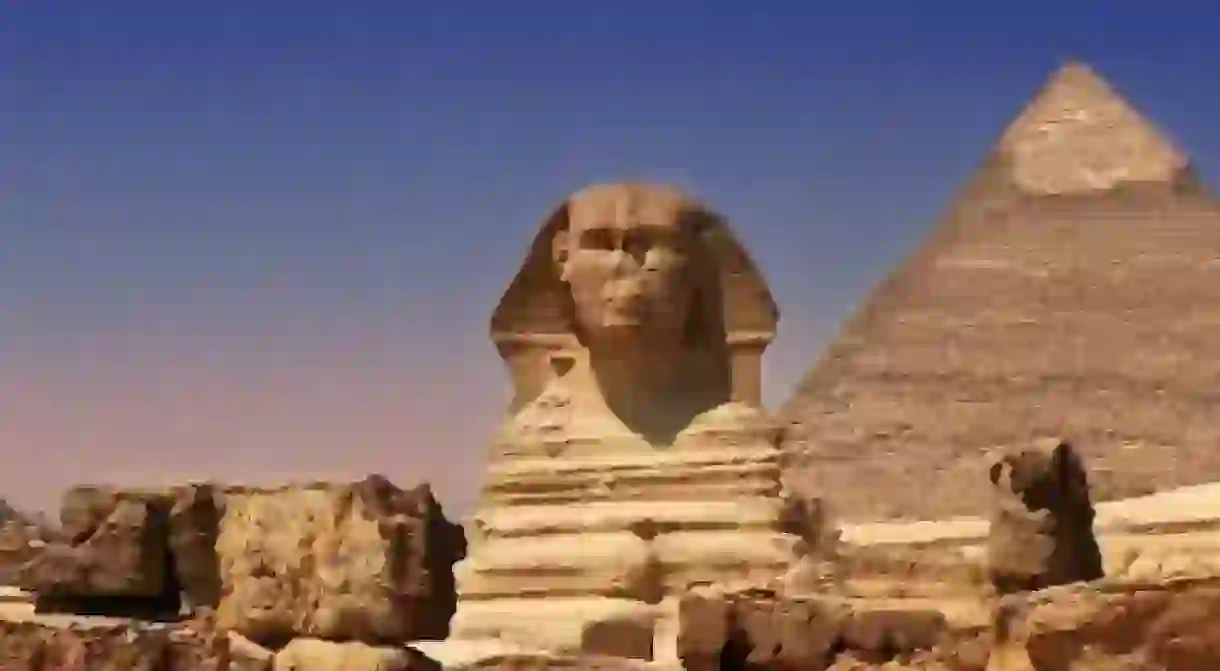NYC Spots To Learn About Ancient Egypt

Egypt is home to one of the world’s oldest civilizations, and it has become a tourist destination as people flock to see the amazing structures in places like Cairo, Luxor, and Aswan. New York, luckily, is home to many elements of ancient Egyptian culture, so New Yorkers can learn without traveling to Egypt.

Metropolitan Museum of Art
Museum
See the broadest range of ancient Egyptian art at the Metropolitan Museum of Art. Visitors can travel through history as they walk through exhibits featuring items from the Old, Middle, and New Kingdoms. Walk through the Temple of Dendur, an ancient temple gifted to the U.S. by the Egyptian government in 1965, and see the many reliefs of ancient Egyptian gods and goddesses.
Brooklyn Museum
Museum, Ruins, School

The Brooklyn Museum began obtaining ancient Egyptian atrifacts in the 1880s, and their collection has grown to include over 8000 items. Many came from the American Egyptologist Charles Edwin Wilbour, who donated pieces and established a dedicated fund. The Wilbour Fund has been responsible for many acquisitions spreading from 3500 BCE to 500 CE.
The Center for the Restoration of Ma’at
The Center for the Restoration of Ma’at is a religious group. It uses Kemet as a spiritual model, and believes Black Africans founded Egypt. Married couple, Jabari Osaze and Anika Daniels-Osaze, started the organization in New York, and the couple leads tours across the world educating others on their faith and Kemetic Egypt. Though they do not have a central location, people can register for tours at the Metropolitan Museum of Art and the Brooklyn Museum and learn about ancient Egypt through their religious guidance.

Move With Grace
Yoga Studio

Stretch and bend as the ancient Egyptians did at Move With Grace, a yoga studio that offers classes called ‘Kemetic Flow.’ A Master Yogi named Yirser Ra Hotep developed this type of yoga in the 1970s. In Kemetic Flow classes, yogis can recreate the postures and movements that are found on the ancient Egyptian reliefs.
Premier Exhibitions
Museum

In 1332 BCE, Tutankhamun became the pharaoh of the 18th Dynasty, but he died when he was only 18 years old. Unlike many of the other tombs in the Valley of the Kings, the tomb of Tutankhamun remained intact until it was discovered in 1922 by the English archaeologist, Howard Carter. At Premier Exhibition’s exhibit The Discovery of King Tut, visitors learn about King Tut’s family, like his heretical father, Akhenaten, and the ancient Egyptian burial ritual. Take a look King Tut’s brilliantly recreated tomb in this unique exhibit.
American Museum of Natural History
Museum, Park

Learn about the history of civilization at the American Museum of Natural History. In the Hall of African Peoples, visitors can learn about ancient Egypt and Africa’s cultural heritage. The exhibition holds artifacts from the Nile River Valley, which was the central life source to ancient Egyptian society. Learn about how civilization grew and became powerful.
Dahesh Museum
Museum, Shop
Who would think that a museum specializing in Europe’s academically trained artists from the 19th and 20th centuries would teach about ancient Egypt? The Dahesh Museum of Art holds works from some of Europe’s great Orientalist artists, who painted Egyptian people and ancient Egyptian structures. Viewers can learn extensively about how Europeans perceived ancient Egypt from these Orientalist works. The museum currently does not have a home, but it will be moving to 64th Street soon. For now, you can take a trip to their gift shop to see a sampling of their Orientalist works that rethink ancient Egypt.













